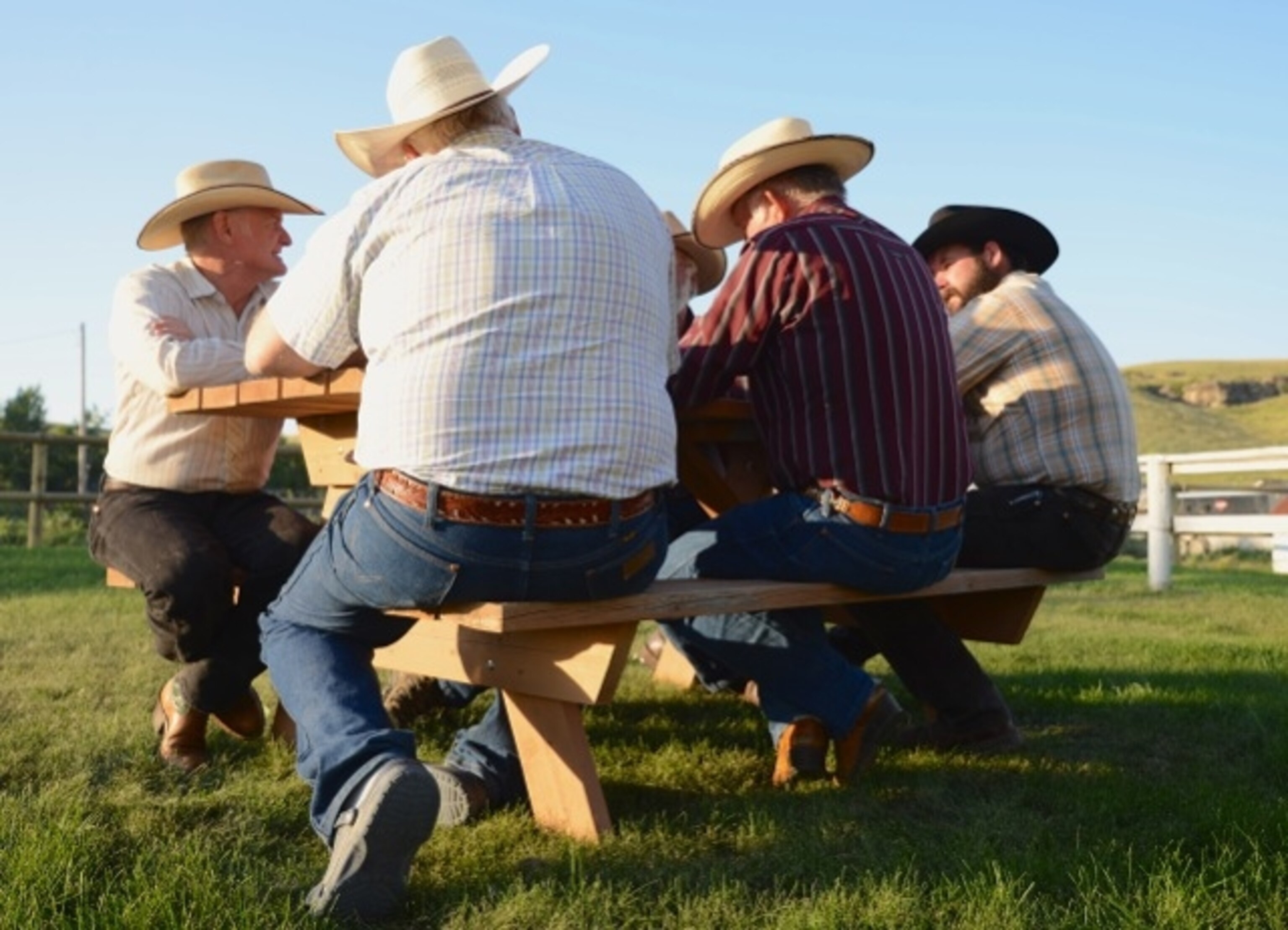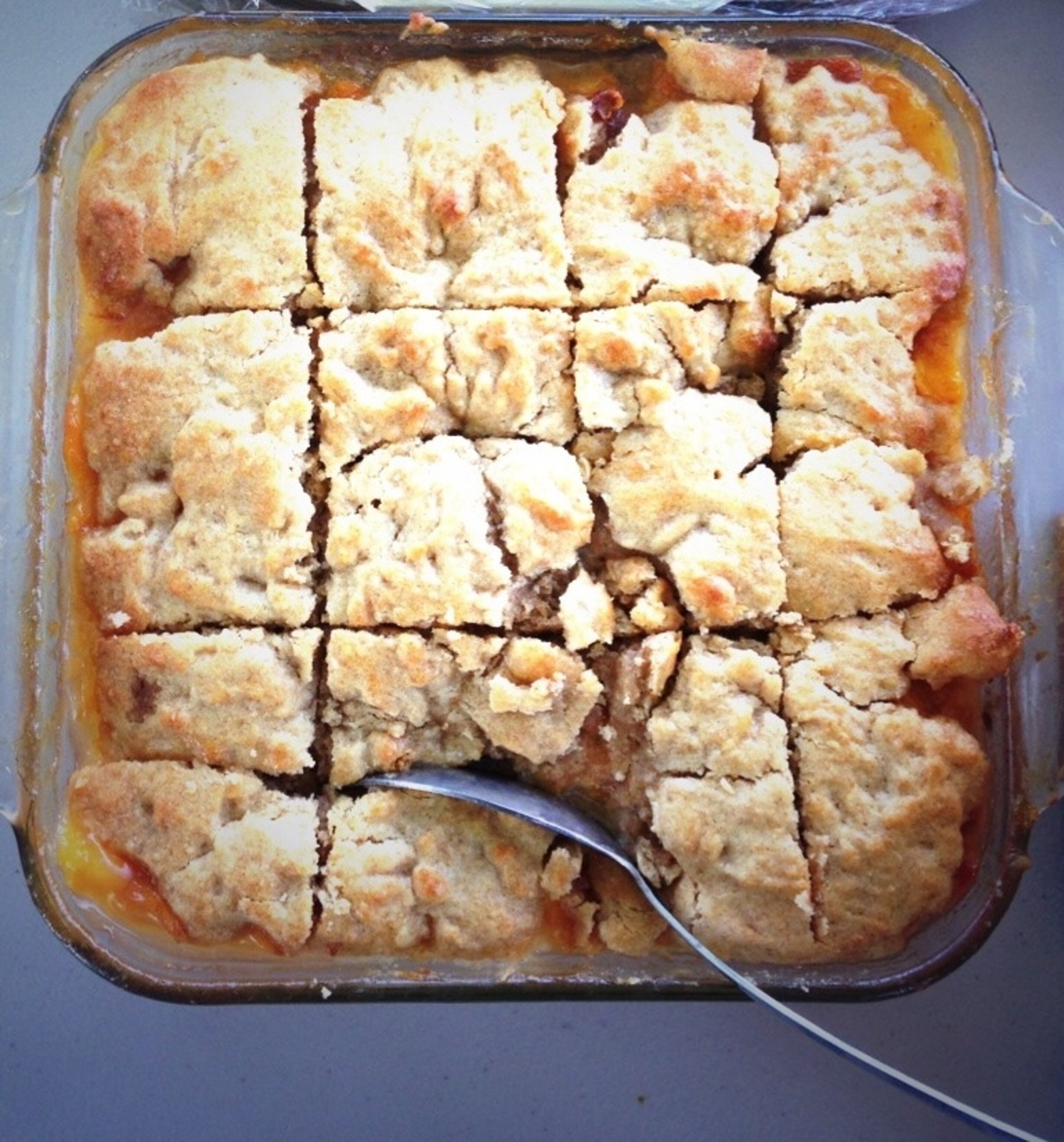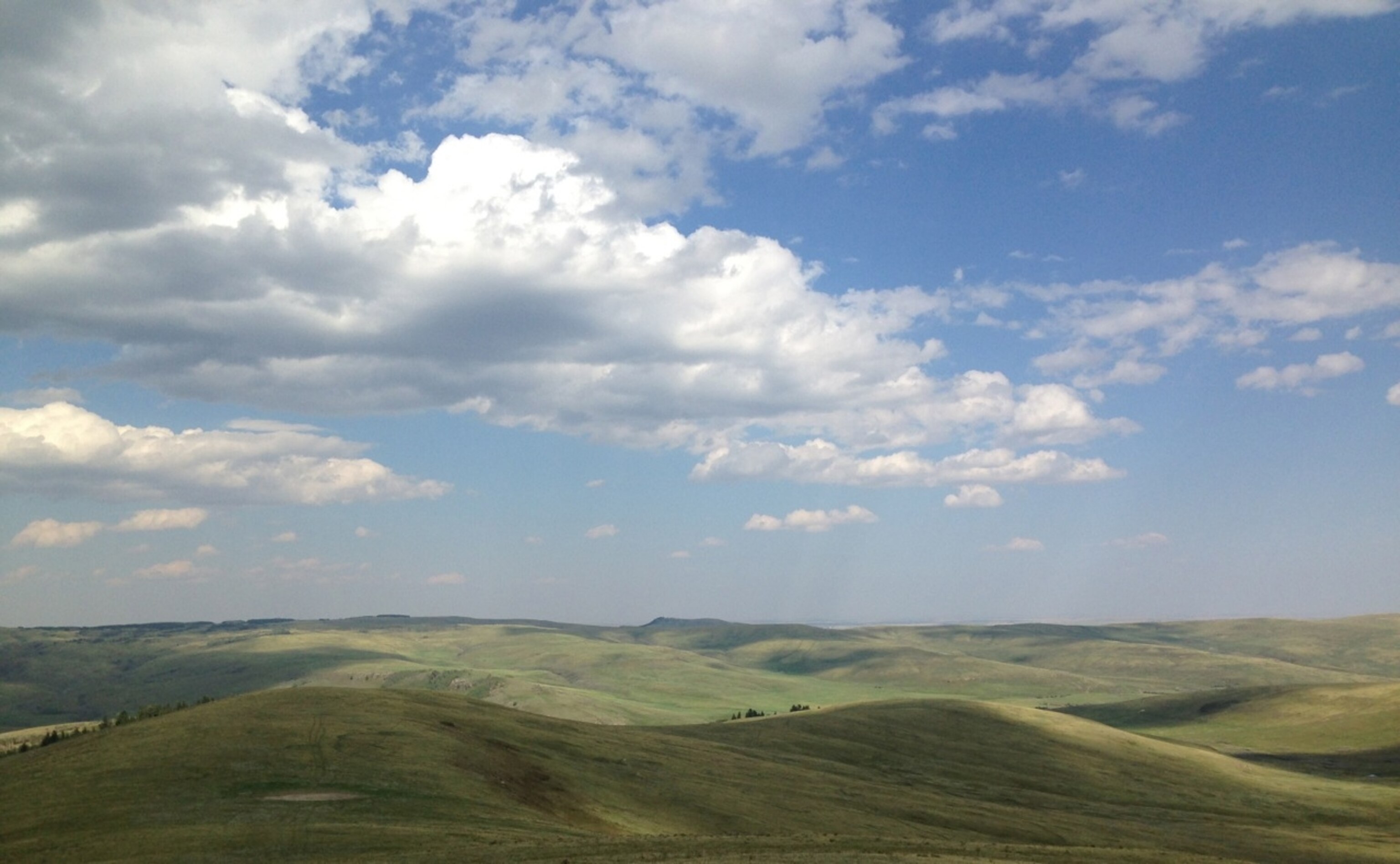The Alberta Story: Riding Horses at Lucasia Ranch
Brushing Chico is the most fun I’ve had in weeks. His coat is sleek and velvety, and with every stroke, a hundred little white hairs fall away, leaving his shiny and muscled surface quivering in the faint light of this century-old barn.
The walls and roof beams are built with rough-hewn tree trunks, the bark still attached, the remembrance of a distant forgotten forest. Bridles and saddles hang from the walls and the floor is scattered with potent green hay.
Chico’s a calm horse—a 15-year old paint who likes chasing cattle—“a roping horse” they call him.
“He likes the cattle work,” explains Wayne Lucas, sporting a felt cowboy hat and cowboy boots that have seen about every kind of weather that Alberta knows: snow, wind, hail, and burning sun. Wayne and his wife Judy have been running Lucasia Ranch for the past 40 years, mostly breeding and buying and selling horses. Today they have more than a hundred, including some beautiful Appaloosa and gargantuan Percherons.
“Cowy” they call it—when a horse works well with cattle. And Chico is cowy, but so stable and level-headed, he suits me just fine. I mount him and then ride through the gates and into the great green beyond, a small slice of the 4,000 acres that make up Lucasia Ranch.
The flies are buzzing and Chico bristles, wiping his long nose against his leg and the grass in front of him. But he is gentle, too, and already I’m in love with this horse and the land that he lives on. They call these the Porcupine Hills, and right now, in August, it’s a wonderful kind of eternal green heaven that seems to go on forever. The rain’s been heavy this summer, and the grass and flowers have exploded into life.

“All this is natural,” says Wayne, from this horse, “Nothing introduced. It’s the way it’s always been.”
We head up into the hills and along the wooded crest, from where you can see the pale violet outline of the Rocky Mountains. The four of us ride all afternoon—Wayne and I, his ranch hand Kristina, and his son Flint.
Flint Lucas is all cowboy, the son and grandson of a cowboy, and a man who’s done his time in the rodeo ring. He’s won before—even once on bareback.
“I was really hungover,” Flint explains, “It was my graduation party the night before.”
“So that’s the secret to riding broncs?” I ask, and he smiles and nods.
Flint’s the kind of guy I latch on to when I’m traveling—someone who knows his way around. He’s a man like his father, who knows the land and how to do things—like rope a steer or stalk a bear.
Which is exactly what we do after we’re done riding. On our way back to the ranch, Flint spotted a black bear in the hills—not a typical black bear, but one that was cream-colored, “with cinnamon legs!” is how he described it.
And so I pulled out the long camera lens and we went back out into the open land, slipping uphill in our cowboy boots, searching for that bear.
“You go this way, and I’ll go that way,” Flint suggests, hoping to flush out the big bear so that we can get a picture. I’m not so convinced that splitting up is a good idea, and the more we hike, the more exposed I feel—exposed and vulnerable and expecting to run into a bear at any moment.
“Do you have bear spray?” asks Flint, as if it’s something that I always carry.
“No, I don’t.”
“Well, can you run fast?” he asks, and I shrug my shoulders.
“. . . as long as you’re slower than me,” he shouts into the wind, and then takes off in the other direction.
“But what do I do if the bear rushes me?” I shout back, a little tense.
“Ah, black bears? You just punch ‘em in the nose,” Flint says, though I am not confident that I would be able to aim and hit an angry bear square on the nose.
But the bear is gone, fled up into the hills, and instead, we spend an hour trudging through the hills, up and down. You can spend days driving through a place, but until you put your feet into the dirt and walk a mile, you really have no sense of the land.
Alberta is land—endless land where the more that I travel, the huger it seems. Out here, Wayne and Judy’s horses run freely, with the wind blowing their black and brown manes. The whole thing feels so cinematic, but it’s not—this is real life and a real ranch, with daily chores and hearty meals around the kitchen table.
That night we go to the community potluck—over at the neighbors at Bar 15 Ranch, a few miles up the road. The air is warm and the front yard filled with the twenty-odd people who inhabit this full and open land. We eat from paper plates, digging into meatballs and tuna casserole and corn on the cob.

Six men sit around one picnic table, all with competing cowboy hats, huddled in conversation: rain, the rodeo, and recent horse sales.
Then I head over to the women and their circle of lawn chairs.
“Hutterite eggs are cheaper than the ones at Costco,” says one.
- National Geographic Expeditions
“Well, if our chickens start laying again, then we should be ok,” answers another.

Under a gnarled tree, the dessert table is heavy with cake pans and a giant glass bowl of trifle. Every dish represents a reliable recipe, carried here from elsewhere. Judy baked her rhubarb cake with rhubarb picked right out of the patch by the house, and the warm apricot cobbler smells like a thousand grandmothers’ kitchens. Somebody’s brought a box of Timbits, a Canadian punctuation to the spread before me, just like the plate of Nanaimo bars that I cannot resist.
“Nanaimo bars!” I shout.
“You don’t have Nanaimo bars in America?” asks one boy, twisting in the swing that hangs from the tree.’
“Nope—they’re a Canadian classic,” I tell him.
“Sheesh!” he exclaims, then swings around again. “You don’t have anything in America—you don’t even have ketchup chips!”
“No,” I admit—we don’t have ketchup-flavored potato chips.”
There’s a lot of things we don’t have, I think, as I drive back to Lucasia Ranch. We don’t have provinces or GST or decent maple syrup or a horse like Chico. Nor do we have a place quite like this—so empty and remote but so incredibly full of life. The late evening sunlight washes the hills, turning green into gold. A ribbon of graveled road shoots out in front of me, pulling me towards the sunset horizon and the rippled landscape. This corner of Alberta is a different planet than the one I have known—a lost world so separate from Calgary and my own city home.
The dogs greet me at the gate, three Australian shepherds with milky blue eyes who yelp and lick and then chase the horses off the road. The small herd of stallions and mares take off, charging down the dusty path and kicking up a cloud of smoke. I watch the animals running, see the fluid muscles in their neck and legs, catch the flickering sunlight reflected in their wet, brown eyes—and my heart takes a picture.
These are the places I want to remember, and these are the memories I want to go back to, over and over. Years from now, when I am elsewhere in the world and hear the word “Alberta”, or see this piece of Canada on a map, this is the place that will come to mind—out of everything else, out of the massive mountains and unchanged prairie, I will think on the green hills of Lucasia Ranch, with horses swarming in the fields, puppies and kittens and ducklings all stumbling around the yard, a light from the kitchen window, and inside, Judy and Wayne, living every day in this wonderful western world they have created.

